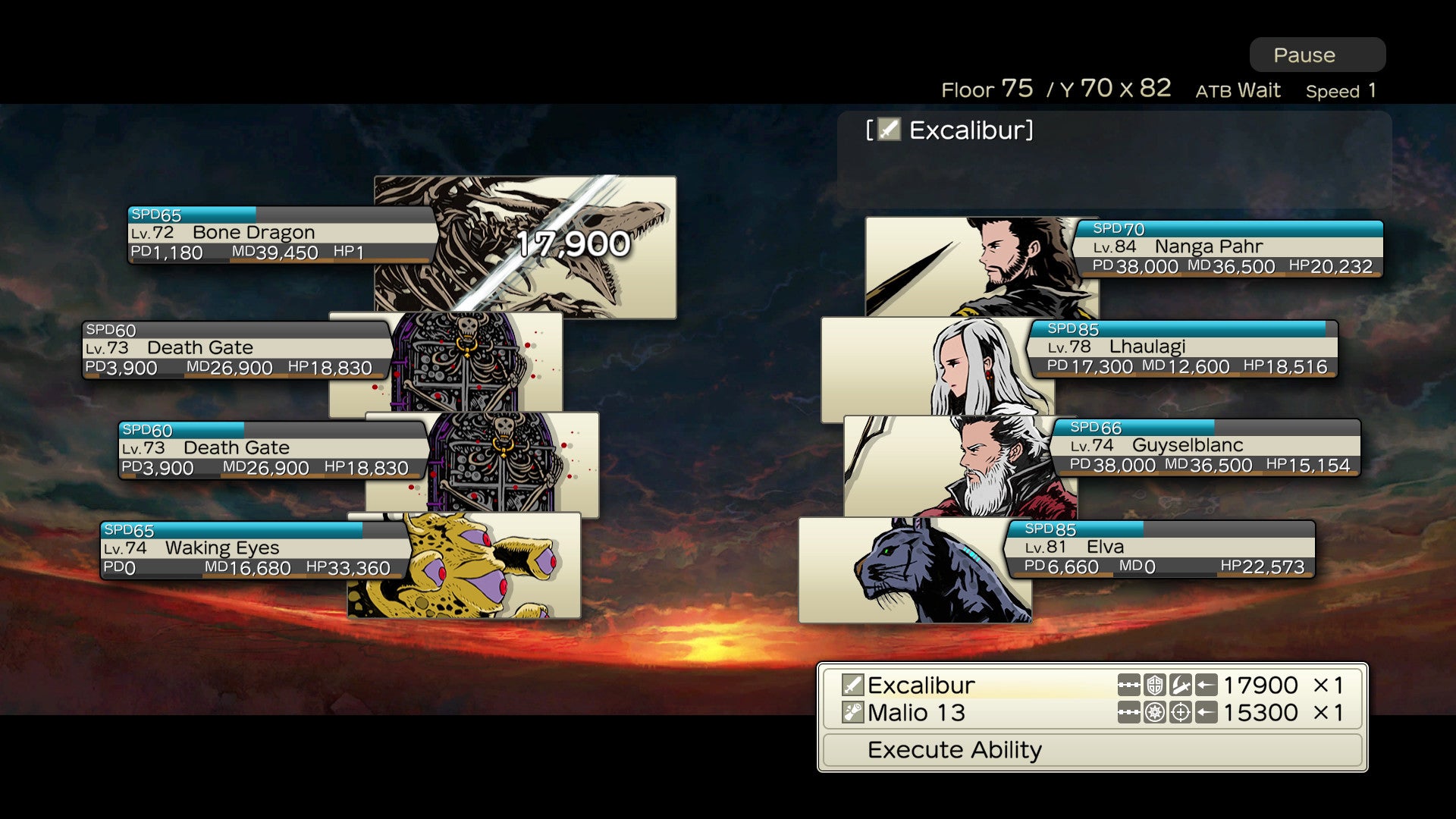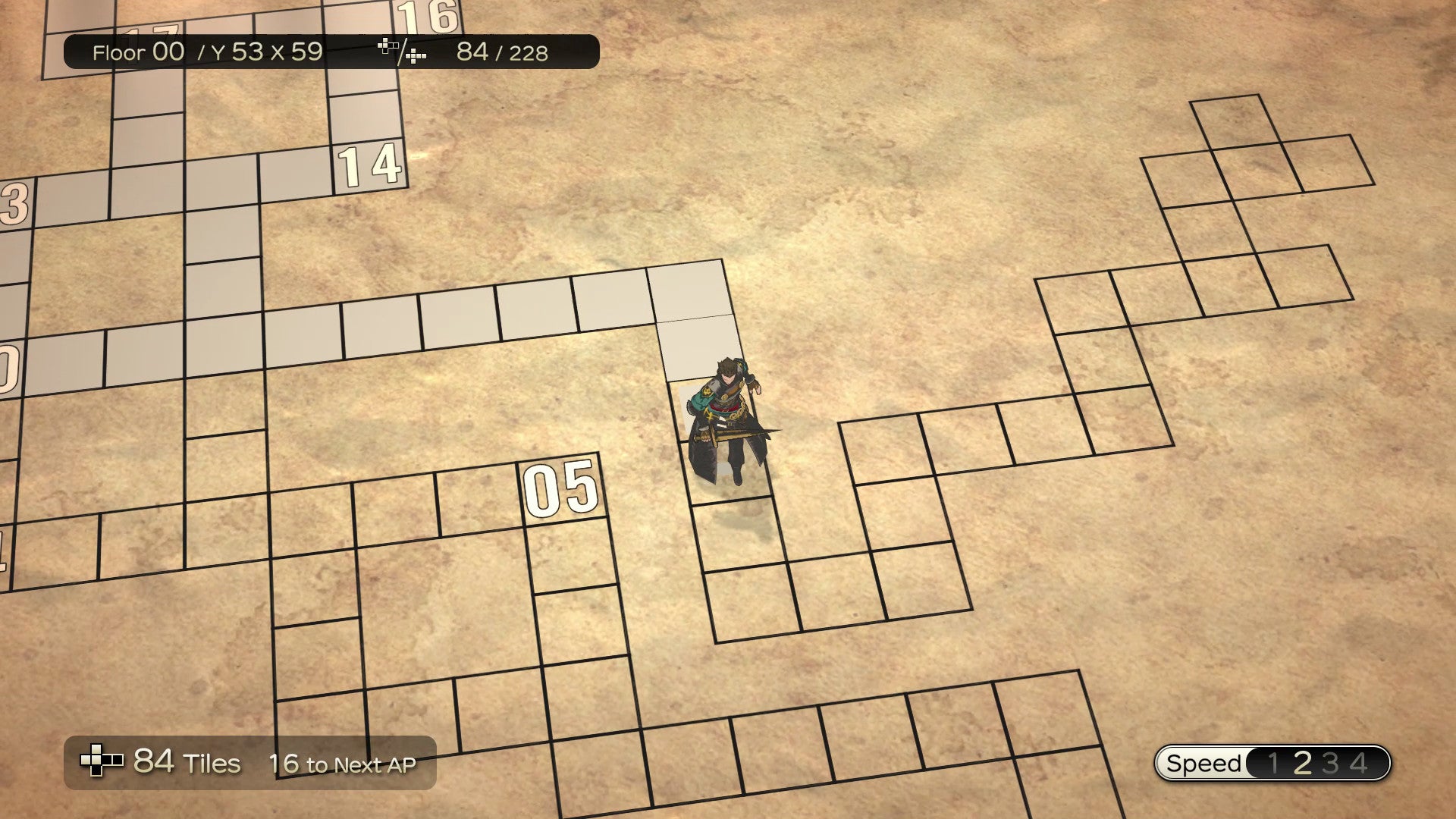Products You May Like
What are the most important aspects of a role-playing game? Is it the characters, the story? The artistic vision of a believable yet fantastical world? Or is it the mechanics? Hiroyuki Ito definitely thinks it’s the latter.
And maybe we should be listening to him. Ito’s resume speaks for itself – he worked on all of the earliest Final Fantasy games, but started carving out a significant role with Final Fantasy 4. To that game he contributed the Active Time Battle (ATB) system, a wonderful piece of game design that would come to be a defining characteristic of the entire Final Fantasy series and Japanese RPG subgenre. Then he went on to expand the job system as the lead battle planner of Final Fantasy 5. He co-directed Final Fantasy 6 alongside Yoshinori Kitase, contributed to greatest-of-all-time Chrono Trigger, and designed the bonkers battle and character progression mechanics of Final Fantasy 8.
Perhaps most importantly, he was director of two of the best games in the Final Fantasy series – 9 and 12, two wildly different games that are both incredible in their own right. Games are made by teams and we as an industry have a bad habit of crediting too much to those individual big names – but there is no denying that Hiroyuki Ito is a towering influence and one of the most important and clever game designers in Japan. If we set aside things like art and story, he is surely the most notable employee Square Enix now has. He is to FF’s game design as Nobuo Uematsu is to its music; the grandmaster. Even the unstoppable force that is Tetsuya Nomura says he regards Ito as one of only four people he considers his “senior”.
So when Ito has a new game, I always sit up and take notice. Dungeon Encounters is the latest of his games – and it’s been a while. He hasn’t directed anything since Final Fantasy 12, back in 2006 and 2007, and has only had three credits that weren’t special thanks or supervisor in the 14 years since. But he’s back – and oh man, Dungeon Encounters is an Ito game.
I mean two things by that, primarily. First, it is stripped back. There’s nothing surplus to requirements here. It is a game about mechanics and systems, exactly the sort of thing that would be designed by somebody who has spoken about watching Formula 1 and American Football and coming away with in-depth game design ideas (ATB and FF12’s Gambit System respectively). This is perhaps Ito’s most stripped-back game ever – clearly super cheap, and super simple – but stunningly deep once you scratch the surface.
If you only come to Japanese RPGs and Square Enix games for story and characters, this plainly isn’t the game for you. When it boots, Dungeon Encounters gives you a bare-bones story primer that is basically a deliberately rote RPG trope. A sprawling labyrinth crawling with evil creatures has appeared near a peaceful town. From the labyrinth pours evil beasts; heroes are called upon to descend into the labyrinth, charting its depths and defeating the creatures within. That’s it. There’s no more setup. With two paragraphs of lore, you’re thrown into the game. Practically everything you see from here on serves a mechanical gameplay purpose.
You pick some party members from those available and head into the dungeon. As you go, you earn gold, unlock further floors of the dungeon, find new abilities, fill out a bestiary, and have the ability to swap out to different party members at will. Dungeons take the form of squares that you move through – almost like a board game – with certain squares triggering events, primarily battles, which are turn-based ATB affairs where your abilities will be determined by party make-up and equipment as much as character level.
Looking at it, I’m acutely aware that this totally could’ve been a physical board game – such is the visual simplicity of it. I wonder if it was prototyped that way. Battles have minor flashes of animations to indicate spells and the like, but really it’s all about looking at stats and meters, planning your next move to try to get ahead of the enemy and keep your party alive. A quote attributed to Leonado da Vinci posits that “Simplicity is the ultimate sophistication”, and Dungeon Encounters feels like a rare expression of that idea in a video game. Everything is stripped back to the bare minimum – but by doing that, the focus is shifted onto the very heart of the game.
Like much of Ito’s design, Dungeon Encounters is deceptively simple at first, but the more that you play the more its depth is exposed to you. What hides beneath a simple game that’ll just have you hammering the standard attack button for the first few floors suddenly becomes dynamic and thrilling. The design is delicately balanced in a way that’s difficult to adequately describe – but it’s constantly encouraging you to push outside of your comfort zone, to floors and zones where you’re under-leveled but where the rewards are too good to resist. By the time you’re about twenty floors into the dungeon, you’re spinning several plates and doing some serious strategizing.

Like I say, this is a mechanical game. It’s nuts and bolts. There’s some lovely character art from Ryoma Ito (Final Fantasy 12, Tactics Advance, and others) and brilliant music from Nobuo Uematsu (who needs no damn introduction), but all of this stuff is really background. First and foremost this is a game about its design, and about how the various aspects of it interact and interlock to create a game that’s as much a puzzle game as it is a role-player. The act of progressing through the labyrinth’s floors is exciting even if they’re all functionally very similar, figuring out how to use the items or gear you find is intriguing, and filling in the tiles of each dungeon floor scratches a very satisfying itch indeed. The way it toys with the expectations and tropes of the RPG genre reminds me a little of another simple great of the year, Loop Hero.
It’s brilliant. My worry, though, is that the stripped-back nature of this game might put some off. Certainly I don’t exactly get an air of confidence from Square Enix about the game – a skim of my inbox reveals a grand total of two press releases about it. In fairness, it was announced and released just two weeks apart – but I also got four Guardians of the Galaxy press alerts in the same period. VG247 received no offer of review code, even on release day. This made me worried it might be a bit crap – you know how publishers will sometimes hide games – but in fact, the hype machine is just dormant for what might be Square Enix’s best game of the year, probably because it isn’t loud and brash with sexy graphics and lavish cutscenes. That makes me a bit sad. This is the sort of game that, were it indie, an indie specialist publisher would make a huge deal of; they’d know it was something special.
What doesn’t make me sad is the fact that after all these years, Square Enix’s most talented designer still hasn’t lost it. This is as low budget and as simple as games from a mega publisher such as this can come – but eight years after I last asked a Square Enix executive where exactly Ito was hiding, and after some fans were left disappointed that he wasn’t on FF16, he’s sent this out into the world: a sublime bit of game design that quite possibly could be adapted for a much bigger game in the future.
Dungeon Encounters is something special. I’m only halfway into the game (at least, based on the advertised number of floors), but it’s already quietly one of my favourite games of 2021. Don’t sleep on it just because it isn’t flashy. It’s out now on PS4, Switch, and PC.
